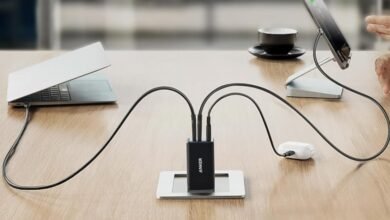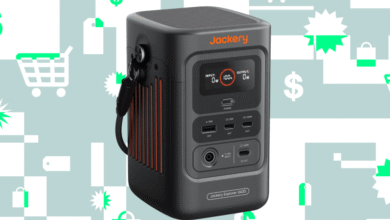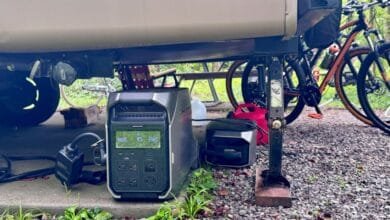World’s First Sodium-Ion Power Station Thrives in Extreme Cold

▼ Summary
– Bluetti unveiled the Pioneer Na, the world’s first portable power station using a sodium-ion battery, at IFA 2025, alongside the slim FridgePower unit for backup during blackouts.
– The Pioneer Na delivers 1,500W continuous power, supports 500W solar input, and operates in extreme cold down to -25°C, outperforming lithium batteries in low temperatures.
– Sodium-ion batteries are safer, offer over 4,000 charge cycles, avoid rare earth metals, but are larger, heavier, and costlier than lithium alternatives due to lower energy density.
– The FridgePower station is 2.95 inches thick, provides 2kWh capacity and 1,800W output for refrigerators, and supports expansion up to 8kWh, though it does not use sodium-ion technology.
– Both products will launch globally in late 2024, with the Pioneer Na available from October 15 and FridgePower from November 4, though prices remain undisclosed.
The world’s first portable power station using sodium-ion battery technology has been unveiled, demonstrating remarkable resilience in frigid conditions where traditional energy storage falters. Bluetti’s new Pioneer Na model delivers up to 1,500W of continuous power, making it suitable for both household and outdoor use, and supports solar input up to 500W. Its standout feature is the ability to operate effectively in temperatures as low as -25°C (-13°F), a significant advantage over conventional lithium iron phosphate (LFP) batteries which struggle below freezing.
While Bluetti claims the Pioneer Na as a “world’s first,” the company had previously announced a larger sodium-ion model in 2021, though it remains unclear whether that unit ever reached consumers. The new product also follows the recent release of a sodium-ion power bank by Elecom, indicating growing interest in the technology.
Sodium-ion batteries offer several benefits beyond cold-weather performance. They are not prone to thermal runaway, provide over 4,000 charge cycles while retaining 70% capacity, and utilize abundant sodium rather than scarce materials like cobalt or lithium. However, the technology is not without drawbacks. Manufacturing relies on a developing supply chain, and sodium-ion cells currently lag behind LFP in energy density. This results in larger, heavier, and more expensive batteries for equivalent capacity.
The Pioneer Na weighs 16kg (35.3lbs) and measures 340 × 247 × 317mm, making it substantially bulkier than Bluetti’s own Elite 100 V2, which uses LFP chemistry. Given these trade-offs, the sodium-ion model is best suited for users in extremely cold climates or those prioritizing ethical material sourcing. It is set for global release on October 15th, though pricing remains undisclosed.
Alongside the Pioneer Na, Bluetti introduced the FridgePower Portable Power Station, a slim 2.95-inch unit designed to mount beside refrigerators. With 2kWh capacity and 1,800W output, it can sustain a fridge-freezer for nearly a full day during outages. Storage can be expanded to 8kWh with additional battery packs. While its battery type hasn’t been specified, it is confirmed not to be sodium-ion. This model enters direct competition with BioLite’s similar concept, announced last year but still not available. The FridgePower launches worldwide on November 4th, with pricing yet to be announced.
(Source: The Verge)




